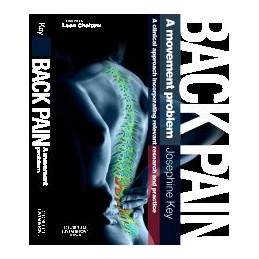- Reduced price

Order to parcel locker

easy pay


 Delivery policy
Delivery policy
Choose Paczkomat Inpost, Orlen Paczka, DHL, DPD or Poczta Polska. Click for more details
 Security policy
Security policy
Pay with a quick bank transfer, payment card or cash on delivery. Click for more details
 Return policy
Return policy
If you are a consumer, you can return the goods within 14 days. Click for more details
Back Pain:: a movement problem is a practical manual to assist all students and clinicians concerned with the evaluation, diagnosis and management of the movement related problems seen in those with spinal pain disorders. It offers an integrative model of posturomovement dysfunction which describes the more commonly observed features and related key patterns of altered control. This serves as a framework, guiding the practitioners assessment of the individual patient.
Data sheet
Foreword by Leon ChaitowPrefaceAcknowledgements
1. Introduction2. The problem of back pain 3. The development of posture and movement 4. The analysis of movement 5. Classification of muscles 6. Salient aspects of normal function of the torso 7. Changed control of posture and movement: the dysfunctional state 8. Common features of posturomovement dysfunction 9. The two primary patterns of torso dysfunction 10. The clinical posturomovement impairment syndromes 11. Examining probable contributions towards dysfunctional posture and movement 12. A functional pathology of the motor system involves a pattern generating mechanism underlying most spinal pain disorders 13. Therapeutic approach 14. Inherent implications in this model
GlossaryIndex
